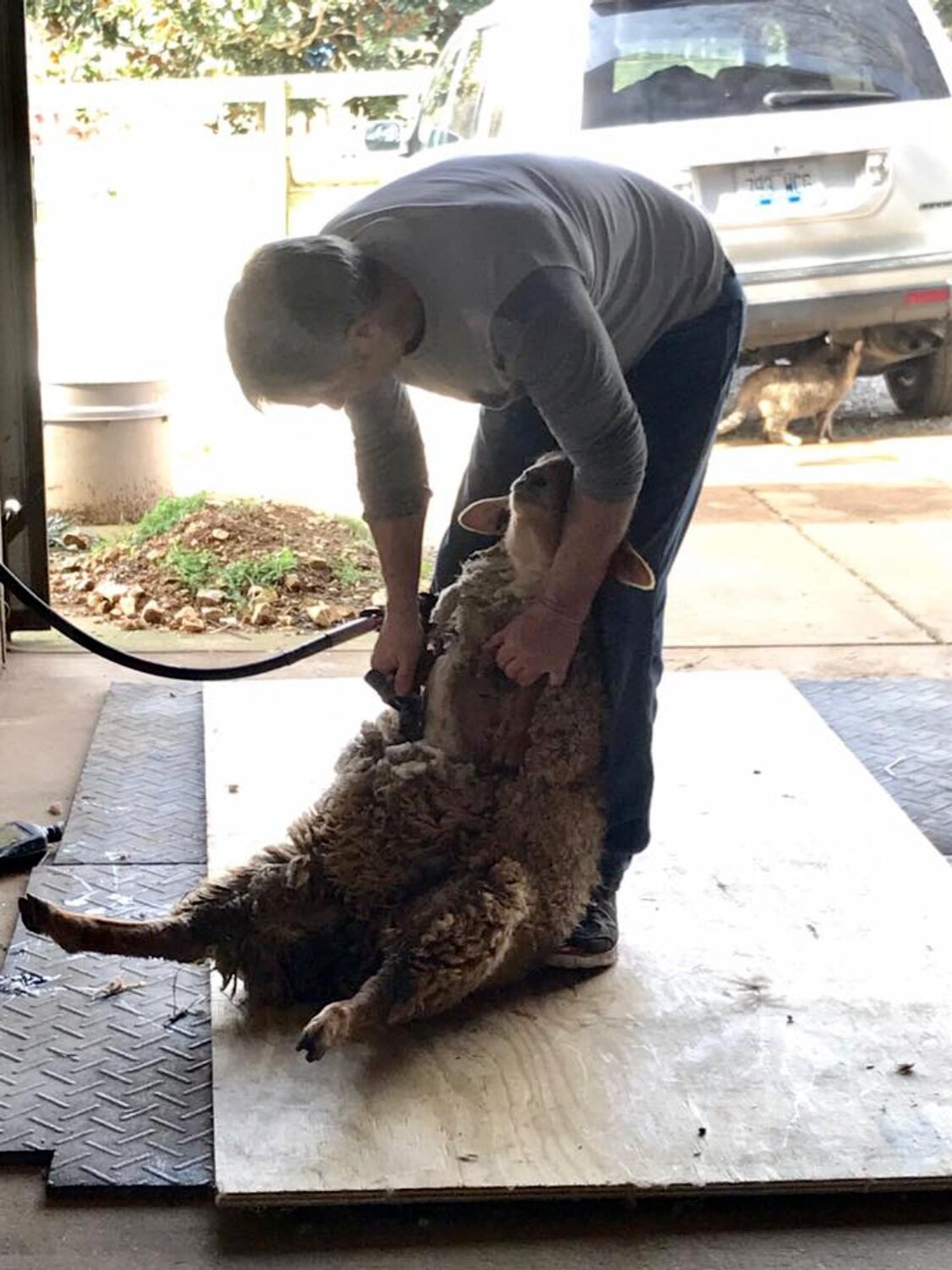One of the most anticipated days on our farm is shearing day. This is the day we harvest the wool the sheep have been growing for the past year, which we then send to a mill for processing into yarn and roving that provides a small income for us.
Our shearer comes down from Kentucky and does a wonderful job with our girls. He’s very gentle and like any good shearer, he gets the job done quick with minimal stress on the animals.
To prepare for shearing, we pen the sheep up in the barn 12 hours prior and withhold food and water. If a sheep has a full rumen, it will press on the diaphragm while being held in the shearing position and can cause respiratory distress as well as panic, making the sheep fight more and causing greater difficulty and risk of injury to the shearer. Another reason we put them in the barn is so they remain completely dry. Even moisture from dew will make shearing difficult.
One of the best things about shearing day is that it’s a family affair. We are so fortunate our kids and grandkids take an interest and all come to help, and we have a job for everybody. We need someone to catch the sheep and bring to the shearing board, someone to carry the fleece to the skirting table, someone to sweep the shearing area, take the sheep back to the pen, skirt the fleeces, and tag and bag the fleeces. At this point we’re just doing a quick initial skirting to get rid of anything nasty. We bag each fleece individually with the name or number and will come back later for a more thorough skirting as well as to record staple length, fleece weight and any particular notes about that fleece.
This year my son-in-law, who has a broadcast/video/marketing background, will be documenting the whole shearing day process on camera. This is something I’ve wanted to do for a long time and am really excited to see how it turns out!
Sometimes we do hoof trimming along with shearing and other times we do that separately. After the sheep are shorn we can get a good look at them and assess body condition, take notes, worm if needed, etc. And then back out they go to begin next year’s wool growth.




